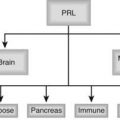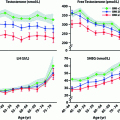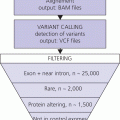1
Introduction
The prevalence of diabetes, especially type 2 diabetes mellitus (T2DM), has increased globally and is expected to continue rising, projected to effect up to 8.6% of the world population by 2045 [ ]. The increased prevalence of diabetes is concomitant with a rise in its commonly related comorbidities. Such diabetes complications affect the quality of life and lower the life expectancy of those living with the disease. Traditionally, diabetes complications have been divided into two major categories, that is, macrovascular and microvascular. In this regard, people with diabetes are up to 4 times more prone to suffer from severe complications derived from macrovascular events, such as coronary artery disease or peripheral artery disease, which translates into a higher incidence of lower extremity amputation, and up to 20 times from microvascular damage such as retinopathy or nephropathy [ , ]. While the burden of diabetes complications has remained high, over the last decade, there has been a trend showing a shift in the type of diabetes complications: a general decrease in severe, acute complications associated with macrovascular complications (such as stroke or infarction) has been observed, which has positively impacted overall survival, while increases in chronic renal complications and other cardiovascular diseases, such as atherosclerosis [ ], heart failure, or peripheral vascular disease [ ] have also been identified.
There are several factors contributing to this trend shift. First, diabetes diagnosis, especially for T2DM, has significantly improved due to changes in guidelines, leading to earlier diagnosis, with new-onset patients identified with lower glycemic levels [ ], and less prolonged exposure to higher levels of hyperglycemia. Second, there is better management of severe complications and better treatments for the associated risk factors, such as lipid profile, blood pressure, or glycemia [ , ]. As a result of these two factors, globally, people with diabetes have increased their life expectancy, leading to prolonged exposure to hyperglycemic conditions, and increasing the prevalence of chronic complications, such as renal complications [ ] and retinopathy [ ]. Third, there has been a global change in diabetes epidemiology, linked to the rise of obesity, which has increased the proportion of type 2 compared with type 1 within the diabetes population [ ]. People with obesity and T2DM tend to have worse risk factors and a higher prevalence of chronic complications [ , ], even though the progression of retinopathy appears to be faster in type 1 diabetes (T1DM) [ ].
In addition, looking beyond the traditional view of vascular damage, which left several conditions being overlooked, has led to an increased understanding of the diversity of complications associated with diabetes. As diabetes directly affects different organs and systems, it can be considered a multisystemic disease [ ]. Indeed, hyperglycemia, hyperinsulinemia, dyslipidemia, and subsequent chronic inflammation are major contributors to metabolic (nonvascular) causes of diabetes-associated diseases, such as nonalcoholic fatty liver disease (NAFLD) [ , ], and a specific type of cardiomyopathy associated with diabetes, defined as diabetic cardiomyopathy (DCM) [ ], as well as other entities frequently related to diabetes such as cancer [ , ], tendino-myopathy [ ], decreased wound [ ] and fracture healing [ ], impaired pulmonary function [ ], and bone damage [ ]. Thus, people with T2DM have a higher incidence of colorectal, breast, and hepatocellular cancer, to name just a few [ ]. The brain is another organ affected by diabetes, as older adults with diabetes show a higher cognitive decline [ ] and dementia [ ]. In addition to the classical complications of diabetes, the effects on nontraditional organs are also being increasingly considered. For example, microvascular complications are now considered a powerful predictor of other cardiovascular complications rather than only affecting the retina, kidney, and small vessels [ ]. Even diabetic retinopathy is no longer considered just vascular, but a neurovascular complication due to neuro-dysfunction and neurodegeneration in the retina [ ].
The changing trends, as well as the diversification of the studied complications, affect how we address and understand diabetes-related complications. Moreover, the increases in diabetes prevalence, including in younger generations who tend to have a more aggressive phenotype of T2DM with severe complications at a younger age, will definitively further impact the observed changing trends. Moreover, most of the data on diabetes complications are obtained from several high-income developed countries, with a lack of sufficient data from developing countries, which account for up to 80% of people with diabetes [ ]. Data from these countries, where the prevalence is also rising, will also contribute to reshaping the current trends in diabetes complications.
2
Microvascular disease
In terms of classical complications of T2DM, microvascular disease is typically seen among people with diabetes, and a few other conditions, such as hypertension, usually affecting small blood vessels in the body. However, the clinical impact is often seen in three tissues: the retina (retinopathy), the renal glomerulus (nephropathy), and nerve sheaths (neuropathy) [ ].
During chronically uncontrolled T2DM, structural changes in the basement membrane of the small blood vessels can occur. These microvascular complications happen due to progressive lumen occlusion, increased permeability, and increased accumulation of extracellular material in perivascular cells. The main driver of microvascular complications of diabetes, from the available evidence so far, is the altered hyperglycemic state. Epidemiologic studies have suggested that the occurrence, or worsening, of microangiopathic complications is related to the severity and duration of hyperglycemia among people with diabetes [ ]. The cells in the retina, kidneys, and nerves are especially sensitive to exposure to chronic hyperglycemia because in these tissues there are limitations in the glucose transport, which eventually leads to the activation of different metabolic pathways (polyol, AGE, PKC, and HBP pathways, oxidative stress, expression of proinflammatory genes, and others) involved in microvascular damage [ ]. So far, these metabolic pathways involved in the vascular damage identified in animal models are known to act together and facilitate each other when increased intracellular glucose flux exists due to hyperglycemia. However, hyperglycemia is not the only risk factor for microvascular complications among people with T2DM. Risk factors such as high blood pressure, metabolic memory, smoking, obesity, and hypercholesterolemia have an important role in developing or worsening these complications. For example, it was reported that different antihypertensive drugs could reduce the prevention or progression of some microvascular complications, such as retinopathy or nephropathy [ ]. Furthermore, immediate intensive treatment of hyperglycemia among people with T2DM has also been associated with reductions in the risks for microvascular events [ ]. New evidence onto how risk factors such as insulin resistance and obesity cause microvascular damage suggests the involvement of endoplasmic reticulum (ER) stress, overproduction of reactive oxygen species (ROS), and finally, cell apoptosis in microvascular tissues.
2.1
Impact of microvascular damage over classical target organs
Diabetes affects the eye in different manners, resulting in various different lesions, such as maculopathy, retinal microvascular disease, cataracts (due to the osmotic changes caused by hyperglycemia), glaucoma (due to angiogenesis in the iris), and ocular nerve palsies (due to mononeuritis in the ocular palsies of the third and six cranial nerves). Overall, diabetic retinopathy is the most common eye complication and the leading cause of blindness among people with diabetes. According to the Early Treatment Diabetic Retinopathy Study classification (ETDRS), diabetic retinopathy is classified into different stages: no apparent retinopathy (NDR), mild nonproliferative retinopathy (NPDR), moderate NPDR, severe NPDR, proliferative diabetic retinopathy (PDR), and diabetic macular edema (DME) [ ]. The principal physiological processes involved in this complication are the thickening of the capillary basement membrane in the retina, changes in the retinal endothelium, and loss of contractile cells (pericytes), which cause changes in the retinal blood flow, and finally, retinal ischemia and subsequent retinopathy. Considering the complexity of the cellular tissues in the microvascular sites affected by diabetes, the concept of retinopathy being just a microvascular disease of the retina has been abandoned in recent years. For example, it has been shown that, due to the particular neurovascular structure of the retina, diabetic retinopathy also involves neuro-dysfunction and neurodegeneration caused by diabetes. These changes include different pathological processes such as loss of dendrites and synaptic activity, neuronal apoptosis, thinning of the inner retina, loss of ganglion cells, reactive microglial activation, and deficits in retinal electrophysiological activity (loss of adaptation to darkness, contrast sensitivity, or color vision) [ , ].
Diabetic nephropathy has also traditionally been considered a microvascular complication, this time at the kidney level, characterized by decreased glomerular filtration and albuminuria, which can ultimately result in renal failure. However, it is now known that the pathophysiology of diabetic nephropathy is more complex, whereby damage also occurs in nonglomerular kidney tissue, such as epithelial degeneration, glomerulosclerosis, accumulation of myofibroblasts, tubular atrophy, and renal arteriolar hyalinosis, as well as damage to renal tubules [ ].
Diabetic neuropathy is the most common complication of diabetes. More than half of people with diabetes develop neuropathy during their lives, which increases the risk of lower extremity amputations, which may be as high as 15% [ ]. The clinical manifestation of this complication varies among patients and involves conditions such as chronic or acute sensory nerve disorders, acute motor neuropathies, or autonomic neuropathies. Diabetic neuropathy has traditionally been considered a microvascular complication, principally due to vascular ischemia of peripheral nerves. However, ischemia is not the only cause of nerve damage. The metabolic changes occurring in diabetes (hyperglycemia and often dyslipidemia), cause hypoxemia, reduced perfusion of the nerves, neuron cell dysfunction, and, finally, apoptosis of the neurons [ ].
2.2
Impact of microvascular damage over nonclassical target organs
The “nonclassical” complications of diabetes have aroused particular interest in recent years, including pulmonary and diabetic foot diseases (DFDs), cardiac microvascular disease, and cerebral microvascular disease. Lung microangiopathy can cause thickening of the capillary basal lamina and alveolar epithelium, which at a functional level can decrease the capacity and volume of this organ [ ].
DFDs and their complications are associated with high morbidity and mortality among people with diabetes. The pathophysiology behind DFD is complex, involving both microvascular (peripheral neuropathy) and macrovascular disease (peripheral arterial disease), the presence of infection, and deformities, as well as additional risk factors (dyslipidemia, smoking, and hypertension). There is a 25% risk probability of developing a foot ulcer among people with diabetes during the disease course [ ]. Depending on the severity, the underlying comorbidities, and the care received, DFD may evolve toward healing, amputation, or even death [ ].
Diabetes may damage the heart at different levels, involving functional, metabolic, and structural changes [ , ]. While macrovascular heart complications are well known, diabetes is also related to coronary microvascular disease. The microvascular network of the heart is crucial for local blood flow and tissue metabolic demands, as well as regulation of substance transport, blood vessel diameter, and smooth muscle tone [ , ]. Due mainly to hyperglycemia and other risk factors, important endothelial dysfunction and microvascular angina can occur.
Diabetic microangiopathy can also result in damage to small cerebral vessels, causing lacunar infarctions, white matter lesions, and cerebral microbleeds, which are often related to an increased risk of stroke. This damage may also be linked to the development and progression of dementia [ ]. Although the different pathophysiological processes leading to cerebral small vessel disease are not entirely characterized, the classical metabolic pathways of microangiopathy in other sites are believed to be involved in cerebral microvascular damage [ ].
3
Macrovascular complications of diabetes
3.1
Current perspective on atherosclerotic cardiovascular disease in people with diabetes
Diabetes, either type 1 or type 2, is frequently linked to reduced life expectancy and disability due to cardiovascular disorders [ ]. Actually, T2DM accounts for most published evidence concerning cardiovascular disease and diabetes. Cardiovascular outcomes mainly comprise of coronary heart disease, stroke, heart failure, and peripheral arterial disease [ ].
3.2
Modifiable and nonmodifiable cardiovascular risk factors in people with diabetes
The excess risk of cardiovascular disease in people with diabetes depends on the presence of modifiable diabetes-specific factors, such as glycated hemoglobin (HbA1c) and microalbuminuria. For instance, persistent elevation of HbA1c is a recognized risk factor for atherosclerotic cardiovascular disease [ ], even in the absence of diabetes [ ]. Hyperglycemia-mediated mechanisms of vascular damage may generally be more prevalent in people with T1DM [ ]. Remarkably, hyperglycemia may be less consistent in predicting future cardiovascular disease in people with T2DM than other independent modifiable cardiovascular disease risk factors related to lipoprotein metabolism, hypertension, and chronic inflammation, which are also involved in the pathogenesis of atherosclerosis [ , ]. Despite this, chronic hyperglycemia remains a driving mechanism of direct vascular cell damage and accelerated atherosclerosis in both diabetic conditions [ ]. Supporting this notion, glycemic optimization confers substantial cardiovascular benefits in diabetic subjects [ ].
Some cardiovascular risk factors are not modifiable, that is, age, sex; irrespective of the type of diabetes, these may also influence the cardiovascular burden. As such, aged subjects with diabetes have an elevated risk for cardiovascular disease than younger diabetic subjects [ ]. With respect to sex, in comparison with their respective nondiabetic counterparts, cardiovascular mortality is increased in women with T1DM compared with men with T1DM [ ]. Likewise, T2DM confers a higher cardiovascular risk in women than in men [ ], showing significantly increased relative risks of stroke and coronary heart disease compared with men. Therefore, the female-related protection against cardiovascular disease is, to a large extent, lost in women with diabetes, particularly with respect to coronary heart disease.
3.3
Newer antihyperglycemic drugs in cardiovascular therapy
A large body of evidence from randomized controlled trials shows that the cardiovascular risk can be reduced by modifying multiple cardiometabolic alterations in people with diabetes [ , ]. In this regard, several evidence-based therapies have been proven to favorably influence multiple cardiometabolic abnormalities in people with diabetes. Indeed, the management of cardiovascular risk factors, including hyperglycemia, dyslipidemia, smoking, hypertension, obesity, and the thrombotic risk, by combining personalized lifestyle and pharmacological approaches has proved beneficial for reducing future cardiovascular events in people with diabetes. In this regard, the use of novel antihyperglycemic drugs, such as glucagon-like peptide receptor agonists (GLP1RAs) and sodium-glucose transporter two inhibitors (SGLT-2is) has been associated with reductions in major adverse cardiovascular and atherosclerotic outcomes in people with diabetes [ , ]. However, the combined benefits of lifestyle and newer pharmacological interventions remain to be further studied. For instance, the impact of either GLP1RAs or SGLT-2is in a specific dietary setting (i.e., Mediterranean diet) may reframe individual interventions to improve the control of cardiovascular risk factors and hence might be a step forward toward personalized medicine in diabetes.
4
Nonvascular complications of diabetes
The inability of different tissues and organs to adequately manage glucose metabolism under impaired insulin signaling irreversibly damages cell and entire organ physiology [ ], directly impacting tissue remodeling and dysfunction in different key diabetic organs and systems. Although diabetic complications have been traditionally attributed to micro- and macrovascular damage, a growing body of evidence also supports the notion of metabolic (nonvascular) causes of chronic exposure to hyperglycemia [ ]. The notion of a metabolic status produced by prolonged hyperglycemic states that can, at least in part, be induced by direct glucose- and lipotoxic mechanisms has been well-documented elsewhere [ ].
Hyperglycemia negatively impacts the glucose homeostasis of cells [ ]. The concomitant activation of alternative pathways of glucose metabolism in response to excess glucose in tissues is defined as glucotoxicity. Actually, hyperglycemic states are frequently linked to increased activation of the polyol pathway, overproduction of advanced end glycation products (AGE), induction of the hexosamine biosynthetic pathway (HBP), and activation of protein kinase C (PKC). In turn, the abovementioned biochemical pathways profoundly affect the cellular redox status due to intracellular accumulation of ROS [ ].
Beyond glucotoxic mechanisms, lipotoxicity is also another hallmark of tissue damage in hyperglycemic and insulin-deficient conditions [ ]. Indeed, the upsurge of free fatty acids (FFA), which are mobilized from adipose stores due to defective insulin action [ ], directly impacts the physiology of target tissues. In this scenario, ROS production also becomes exacerbated by the metabolic shift to increased rates of FFA uptake and β-oxidation, which is considered the predominant mitochondrial fuel to maintain sufficient levels of ATP synthesis in diabetes [ ]. Because FFA are a less efficient substrate than glucose to obtain energy [ ], they can negatively impact cardiac efficiency (myocardial oxygen consumption/cardiac work). Although the exact mechanism explaining such high cardiac inefficiency is not entirely understood, it could be explained by increased energy expenditure (since fatty acid is a less oxygen-efficient substrate than glucose), or mitochondrial uncoupling, or a combination of both [ ]. In this context, intracellular elevations of FFA and mitochondrial dysfunction can lead to increased production of ROS, which can also increase intracellular oxidative stress and endoplasmic reticulum (ER) stress, and inhibit autophagy [ ]. Furthermore, the local accumulation of newly generated ROS nearby the mitochondria can contribute to mitochondrial impairment under these conditions. Thus, the local accumulation of ROS can promote mitochondrial dysfunction. This, together with the inability of cells to metabolize all incoming FFA, can contribute to intracellular lipid accumulation and lipotoxicity [ ]. The latter findings suggest that mitochondrial dysfunction could be central in the development of metabolic cell damage.
Emerging studies also show that persistent exposure to high glucose causes epigenetic modifications in different key biomolecules. In this regard, alterations in the acetylation of proteins (i.e., histone modification), DNA methylation [ ], and the relative abundance of microRNA (miRNA) [ ] have been reported in hyperglycemic states; however, their influence over the metabolic basis of glucotoxicity and lipotoxicity remains poorly explored.
Recent data support that the impaired metabolic status boosted by hyperglycemic states can be due to direct nonvascular, target-organ damage in different systems [ ]. As relevant examples, we will focus on four of them: neurological alterations produced by neuronal dysfunction, which may be revealed by the appearance of signs of retinal neurodegeneration; nonglomerular kidney damage due to tubulo-interstitial renal injury, which differs from the classical glomerular microangiopathy; and direct metabolic damage in two key targets, the liver and the myocardium, which link to NAFLD and DCM, two main complications of diabetes. Apart from those, hyperglycemia has also been associated with the development of nonclassical conditions such as tending-myopathy [ ], decreased wound [ ] and fracture healing [ ], impaired pulmonary function [ ], bone damage [ ], or increased risk of cancer [ ].
4.1
Hyperglycemia and neuronal alterations: the retina as an example
Diabetic retinopathy depends on the duration and severity of hyperglycemia. Beyond the AGE-mediated changes on the microvasculature, several other biochemical pathways that play a central role in diabetic retinopathy are also activated in response to hyperglycemia. Elevations in neuronal glucose content are common in hyperglycemic subjects and result in direct neuronal damage [ ]. Thus, glucose toxicity is a common finding in peripheral and central nervous nerve tissues in which insulin is not required to uptake glucose [ ].
Glycolysis and the polyol pathway are also active in the neuroretina. Intracellular accumulation of glucose leads to the activation of the polyol pathway, and, as a result, sorbitol accumulates intracellularly in the retina, leading to osmotic cell damage. Additionally, fructose, another byproduct of the polyol pathway, which is phosphorylated to form fructose 3-phosphate and transformed into 3-deoxyglucosone, is also involved in AGE-mediated mechanisms [ ]. In this setting, the induction of the polyol pathway can deplete cells from reduced nicotinamide adenine dinucleotide phosphate (NADPH) during the reduction process of glutathione, leading to further oxidative tissue damage. Consistently, excess ROS and depletion of ROS scavenging enzymes have been documented in the retina of diabetic rats [ ].
Nicotinamide adenine dinucleotide (NAD) + consumption is also commonly elevated in hyperglycemic states, as is the NADH/NAD + ratio, which may further concur along with a concomitant induction of sorbitol production [ ]. Beyond the impact of sorbitol elevations on the retina, sorbitol can accumulate and be trapped in the lens of diabetic subjects [ ]. Such accumulations may produce osmotic stress and hence lead to macular edema, impairing the central vision in affected subjects.
4.2
Diabetic kidney disease, more than glomerular kidney damage
Diabetic nephropathy is another cause of morbidity and mortality in people with diabetes [ ]. In addition to injury occurring in the glomerulus, particularly the mesangium, tubulointerstitial damage is also a major finding of diabetic nephropathy, and currently considered an important predictor of renal dysfunction [ ].
Tubulointerstitial injury in diabetes has been related to vascular and nonvascular causes, including thickening of the tubular basement membrane, tubular atrophy, interstitial fibrosis, and atherosclerosis [ ]. In particular, the impact of elevated glucose conditions on interstitial cells has been directly linked to the pathological changes of diabetic nephropathy, regardless of glomerular injury. In the main, interstitial fibrosis of the tubulo-interstitium has been attributed to the potential fibroblastic transformation of tubular epithelial cells [ ] and the infiltration of immune cells [ ], thereby worsening tubular function. The formation of AGE and activation of different metabolic pathways [ ], leading to enhanced oxidative stress, such as PKC activation, and increased activation of the polyol pathway [ ], are among the potential mechanisms involved in tubular afflictions.
According to the evidence gathered during the research on the novel class of glucose-lowering agent, the SGLT2, over the past several years, has shown that these therapies confer nephroprotective properties associated with the prevention of kidney disease progression [ , ]. Beyond the beneficial glucose-lowering and metabolic effects of these drugs on renal disease, recent evidence suggests the involvement of other cellular and molecular mechanisms in the amelioration of kidney disease. In this regard, the administration of one of the types of SGLT2i (i.e., empagliflozin) decreased renal fibrosis and macrophage infiltration in nondiabetic kidney disease [ ], thereby suggesting that these drugs could also have direct favorable effects on the physiopathology of diabetic kidney disease.
4.3
The liver and the myocardium are two examples of hyperglycemia-induced direct metabolic tissue damage
The common denominator of carbohydrate (mainly, glucose) and lipid toxicity is commonly defined as a metabolic derangement, especially in managing the intracellular energy homeostasis of excess amounts of both substrates. Conceivably, both factors are among the main culprits of liver and myocardium injury in diabetes [ , ].
4.3.1
The liver
The liver is a central organ in carbohydrate metabolism, home to several key metabolic pathways, including involvement in glycogenesis, glycogenolysis, and gluconeogenesis, which are significantly altered in diabetes [ ]. The mechanisms involved in direct tissue lipotoxicity and glucotoxicity include increased ER stress, oxidative stress, and mitochondrial dysfunction [ ]. When the storage capacity of the hepatocytes is overwhelmed, FFA can be further transformed into other lipotoxic species, such as ceramides. These very reactive lipid species can promote apoptosis [ ], which is one of the mechanisms leading to hepatocyte death [ ].
4.3.2
The myocardium
Diabetic cardiomyopathy is another complication of diabetes. It is characterized by myocardial fibrosis and myocellular hypertrophy and is a risk factor for heart failure in diabetes [ ]. Cardiomyocyte apoptosis is also enhanced in DCM [ ], which can lead to the loss of myocardial contractile units, resulting in cardiac failure. As indicated previously, diabetes is also associated with activated HBP and, hence, an increased generation of glucosamine. Importantly, this molecule is used to promote O-GlcNAcylation of different target cardiac proteins and myofilaments such as actin, myosin heavy chains, myosin light chains, and troponin-i [ ]. In addition, the latter may further coexist with significantly low calcium sensitivity levels, leading to cardiac dysfunction [ ]. Of note, increased protein O-GlcNAcylation has been reported in experimental cardiomyopathy and in failing human hearts, which correlated with reduced diabetic cardiac mitochondrial function [ ].
Myocardial FFA utilization is increased, whereas glucose use is reduced in the context of diabetes. Myocardial oxygen consumption is thus increased, which results in a reduced cardiac efficiency [ ]. Despite the increased FFA oxidation rates shown by the myocardium [ ], triglycerides, and other potentially lipotoxic species can also accumulate in this tissue and contribute to heart dysfunction in people with diabetes.
DCM remains an insufficiently explored condition with an important nonvascular basis, largely disregarded in clinical practice. Thus, future work is needed to deepen the understanding of HBP on DCM and to identify the specific targets of O-GlcNACylation and/or bioactive ceramides that may accumulate in the diseased hearts.
4.3.3
Other nonclassical conditions
Despite the emerging notion that nonvascular mechanisms contribute to certain conditions related to diabetes, the underlying molecular mechanisms are still poorly defined. The molecular basis of these other diabetic complications with a nonvascular basis, such as tendinopathy [ , ], decreased wound healing [ ], fracture healing [ ], impaired pulmonary function [ ], bone damage [ ], or increased risk of cancer [ ], is still largely unknown. As such, whether these complications are directly related to excess glucose exposure, lipotoxic mechanisms, or indirectly due to factors related to impaired insulin signaling, or all of them are poorly understood. For example, cancer cells rapidly metabolize glucose, thereby preventing glucotoxicity. Thus, excess glucose positively influences various signaling pathways, which can contribute to cancer cell proliferation, by activating oncogenic pathways [ ], contributing to the association of diabetes with cancer disease [ ].
5
Concluding remarks
The current knowledge suggests that common metabolic components of diabetes, that is, dysglycemia and/or altered insulin signaling, accelerate the course of common clinical complications of this condition. Importantly, diabetic complications can be attributed to both vascular, that is, micro- or macrovascular, and nonvascular mechanisms. Compelling evidence supports the notion that both vascular and nonvascular mechanisms coexist in the context of diabetes. For instance, recent studies suggest that changes in microvascular settings, that is, the retina, can predict the incidence of cardiovascular events in diabetic subjects. Insomuch as micro- and macrovasculature interacts in the vasa vasorum of large vessels, it has been suggested that microvascular alterations in this layer could impair the correct supply and repair of damaged vasculature. Similarly, it is not clear whether nonvascular injury proceeds or occurs after or in parallel to microvascular alterations. Thus, further investigation is also deserved to further dissect the exact sequence, if any, of the pathogenic mechanisms that trigger injury in target tissues under diabetic conditions; however, recent data support the notion that nonvascular events could also be a key player in priming the early development of diabetic complications.
Although the incidence and mortality rate due to cardiovascular causes has been reduced over the years, the prevalence of cardiovascular outcomes continues to be higher in diabetic subjects. Accumulating evidence strongly support the notion that diabetic-related cardiovascular care is transitioning from traditional medical intervention to individualized precision therapies. In this regard, the uses of GLP1-RAs, SGLT-2is, as well as antihypertensive and lipid-lowering therapies provide an improved precision approach to prevent future adverse cardiovascular outcomes in people with established cardiovascular disease. Moreover, such cardiovascular outcomes may be further prevented by combining lifestyle modifications and pharmacological interventions using newer and promising adjunct drugs. Overall, combined strategies could help reduce the burden of cardiovascular diseases and contribute to preventing adverse cardiovascular events in people with diabetes.
References
Stay updated, free articles. Join our Telegram channel

Full access? Get Clinical Tree








